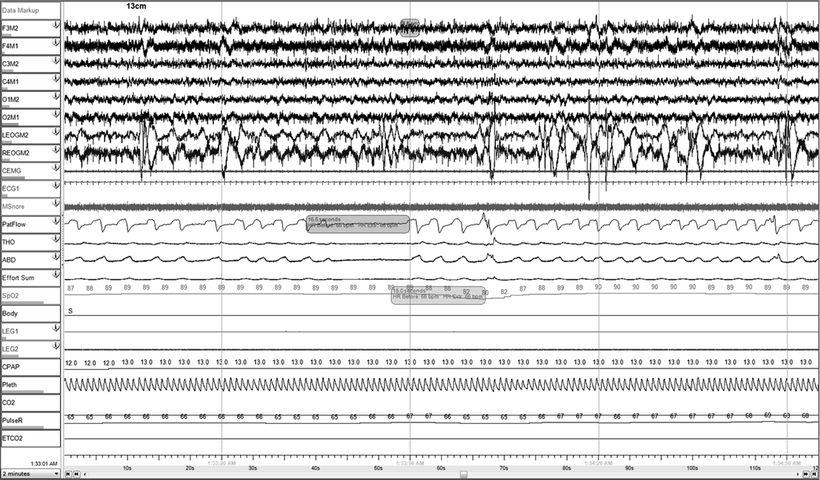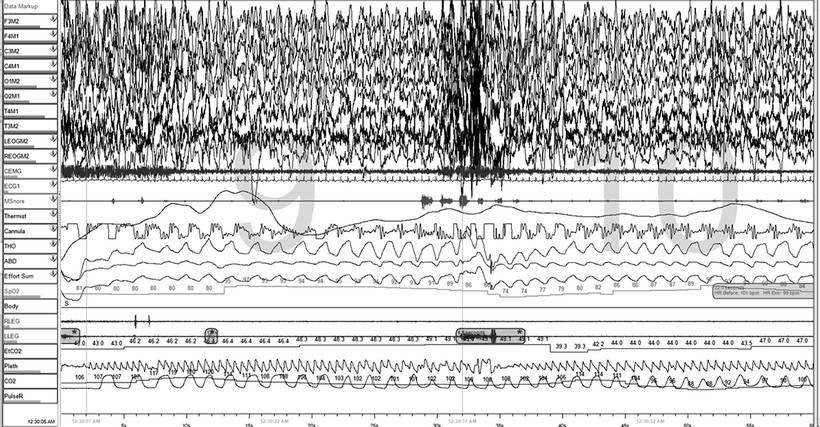41
Interventions in the Pediatric Sleep Laboratory
LAREE FORDYCE
NOTE: This chapter corresponds to Chapter 48 in Fundamentals of Sleep Technology, 2nd edition.
CASE STUDY NO. 1
A 10-year-old boy with severe obstructive sleep apnea (OSA) has enuresis for 8 months. He is not taking any medications. BMI is 33 kg/m2. Polysomnographic tracing in Figure 41-1 shows continuous positive airway pressure (CPAP) titration at 13 cm H2O.

Figure 41-1
1. What is the best course of action at this time?
A. Stay at 13 cm H2O CPAP setting.
B. Switch to bilevel positive airway pressure (BPAP) titration.
C. Increase CPAP setting to 14 cm H2O.
D. Add supplemental O2.
2. In switching to bilevel positive airway pressure (BPAP) titration, which setting should be chosen?
A. EPAP 13, IPAP 17 cm H2O
B. EPAP 4, IPAP 8 cm H2O
C. EPAP 5, IPAP 9 cm H2O
D. EPAP 9, IPAP 13 cm H2O
CASE STUDY NO. 2
A 13-year-old girl with a BMI of 47 kg/m2 demonstrates a respiratory pattern similar to the polysomnographic tracing in Figure 41-2.

Figure 42-1
3. What is the respiratory pattern in this tracing?
A. Biot’s breathing
B. Tachypnea
C. Cheyne-Stokes respiration
D. Paradoxical respiration
4. What is the most likely diagnosis?
A. Obstructive sleep apnea
B. Central sleep apnea
C. Hypoventilation
D. Diaphragm paralysis
5. In Figure 41-2, continuous positive airway pressure (CPAP) has been titrated to 15 cm H2O CPAP pressure. What is the best intervention at this time?
A. Increase CPAP setting to 16 cm H2O.
B. Switch to bilevel positive airway pressure (BPAP) titration.
C. Add supplemental oxygen.
D. Continue at current CPAP setting.
MULTIPLE CHOICE QUESTIONS
6. Which of the following is a desired goal of positive airway pressure (PAP) titration?
Stay updated, free articles. Join our Telegram channel

Full access? Get Clinical Tree





